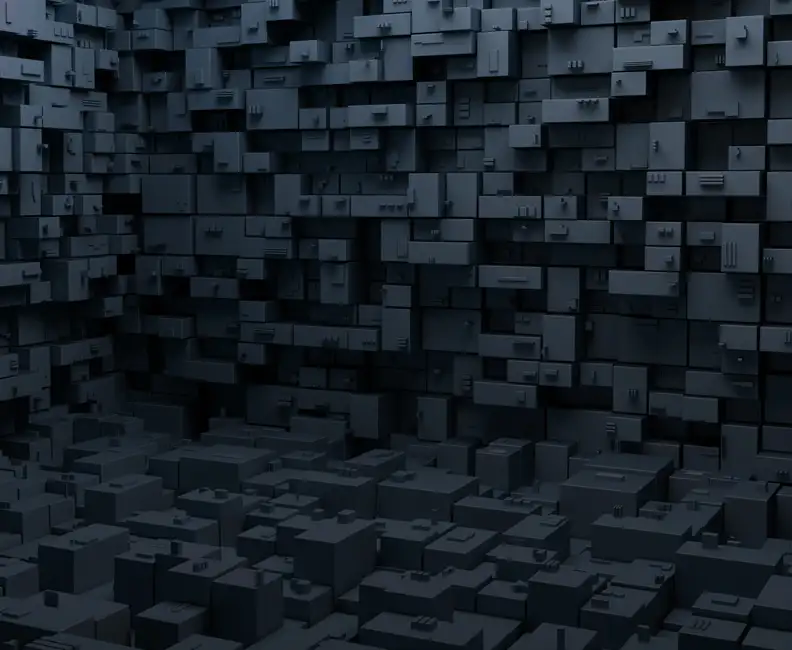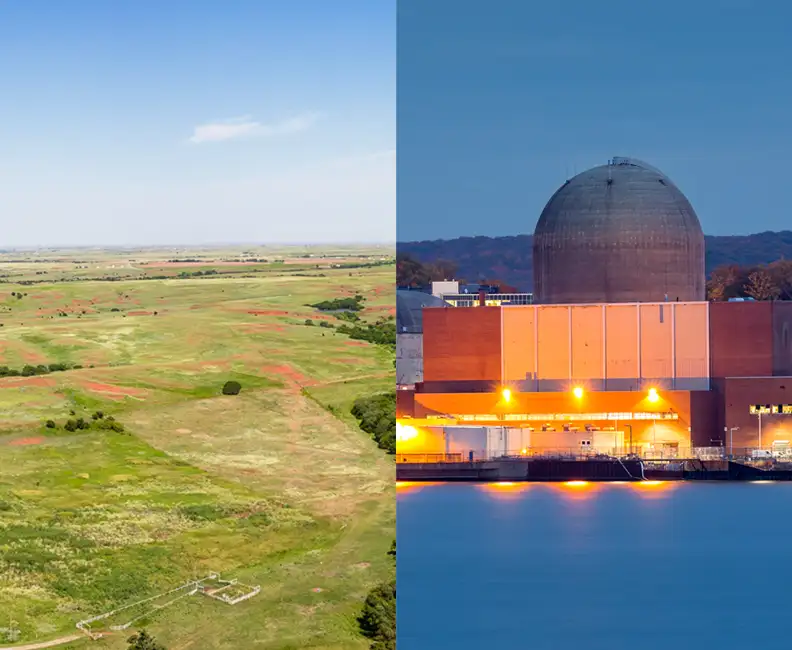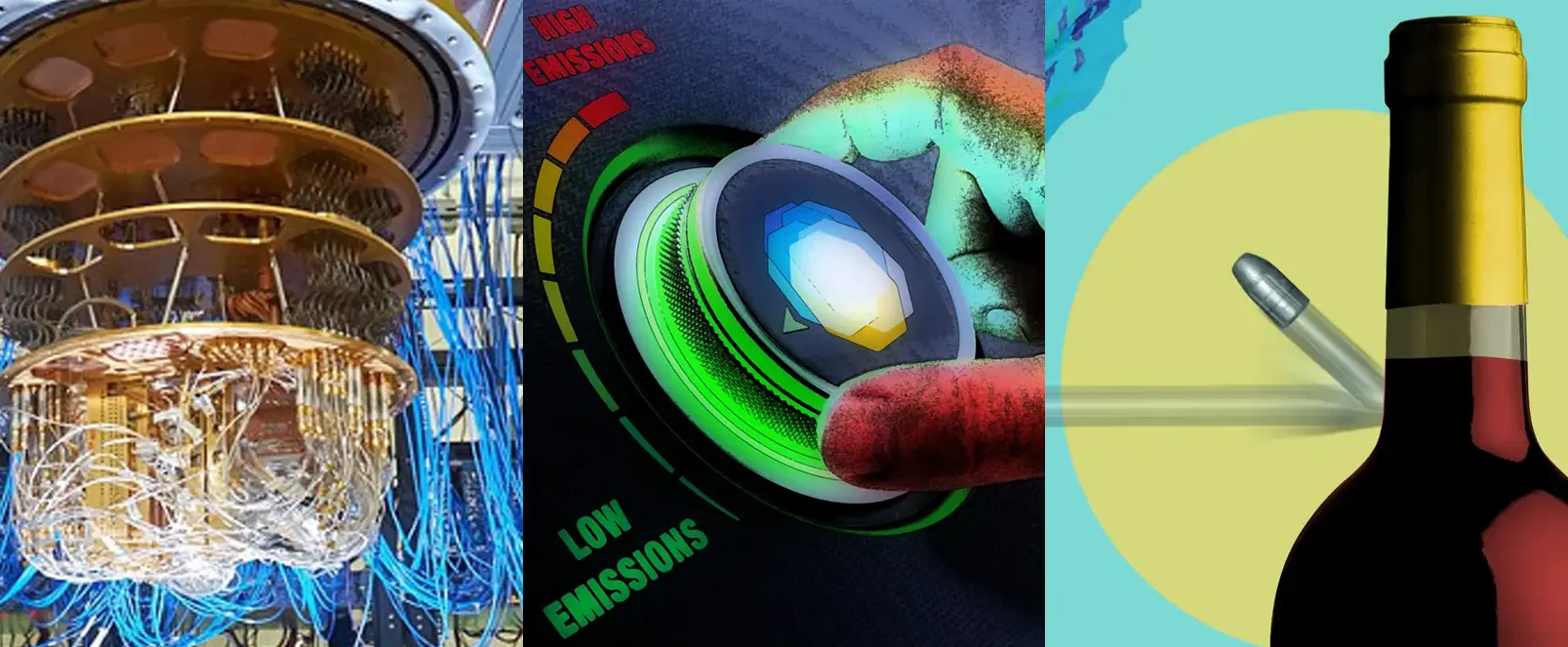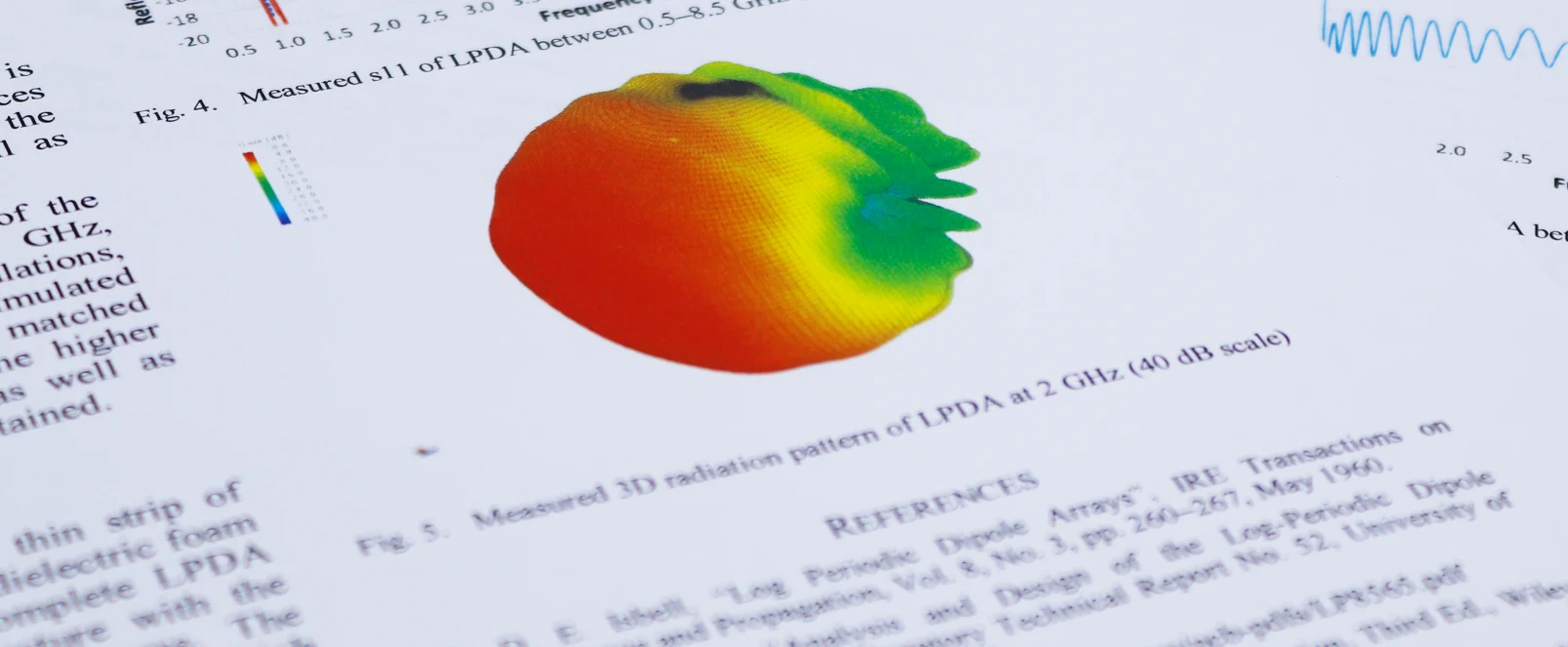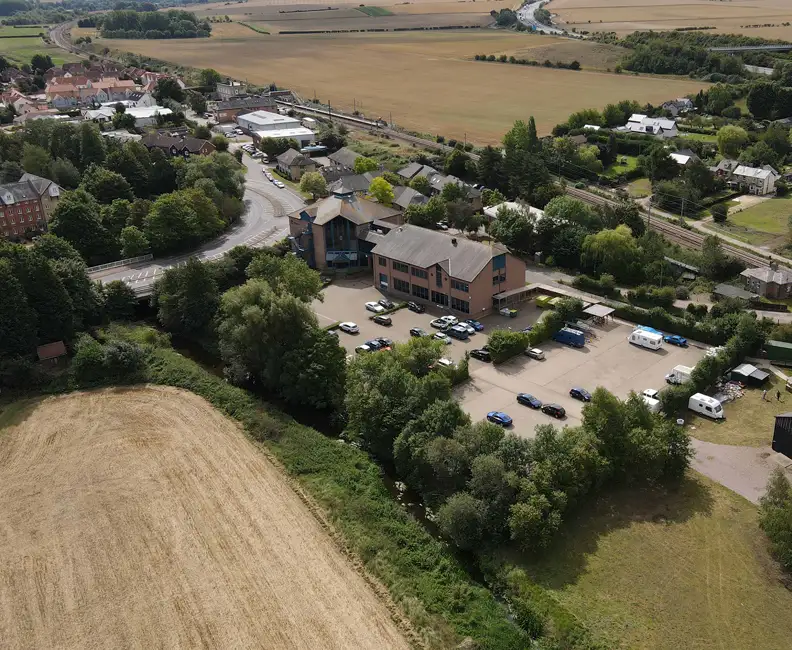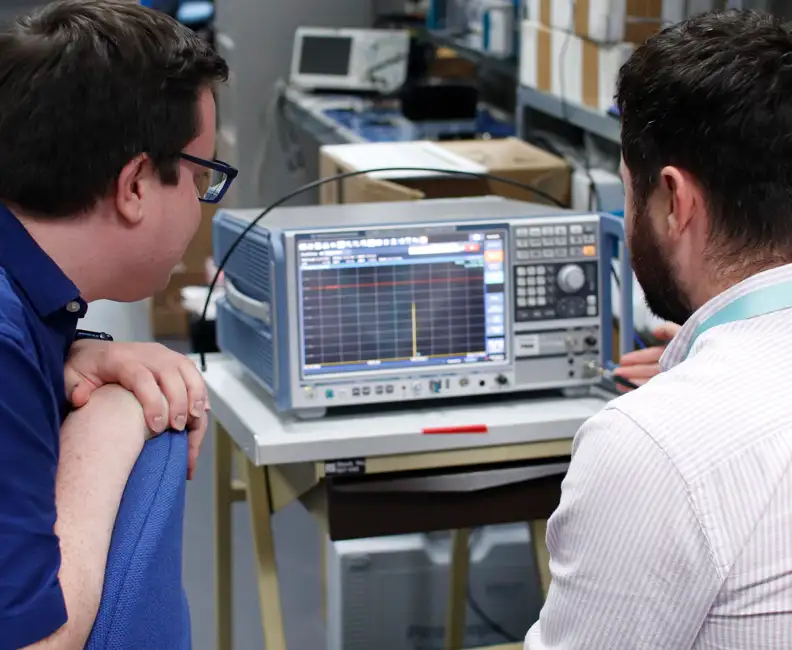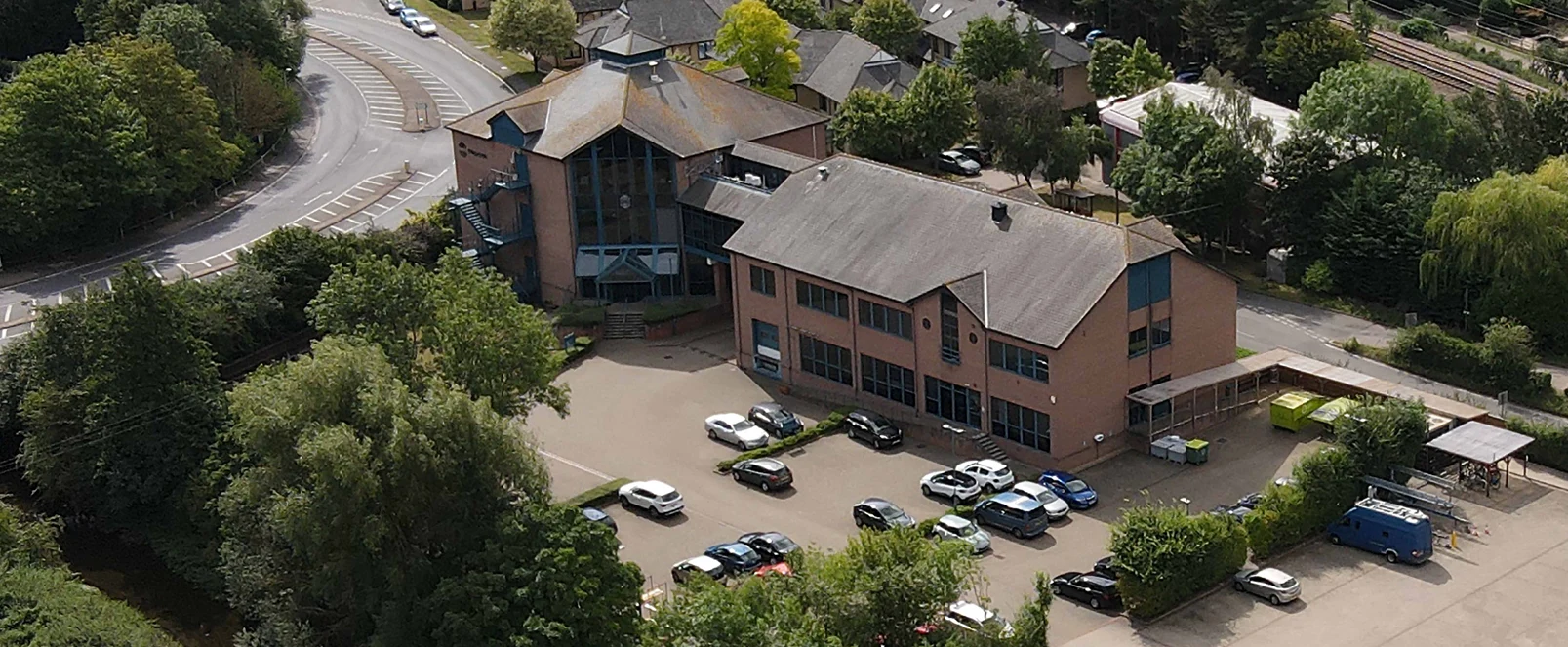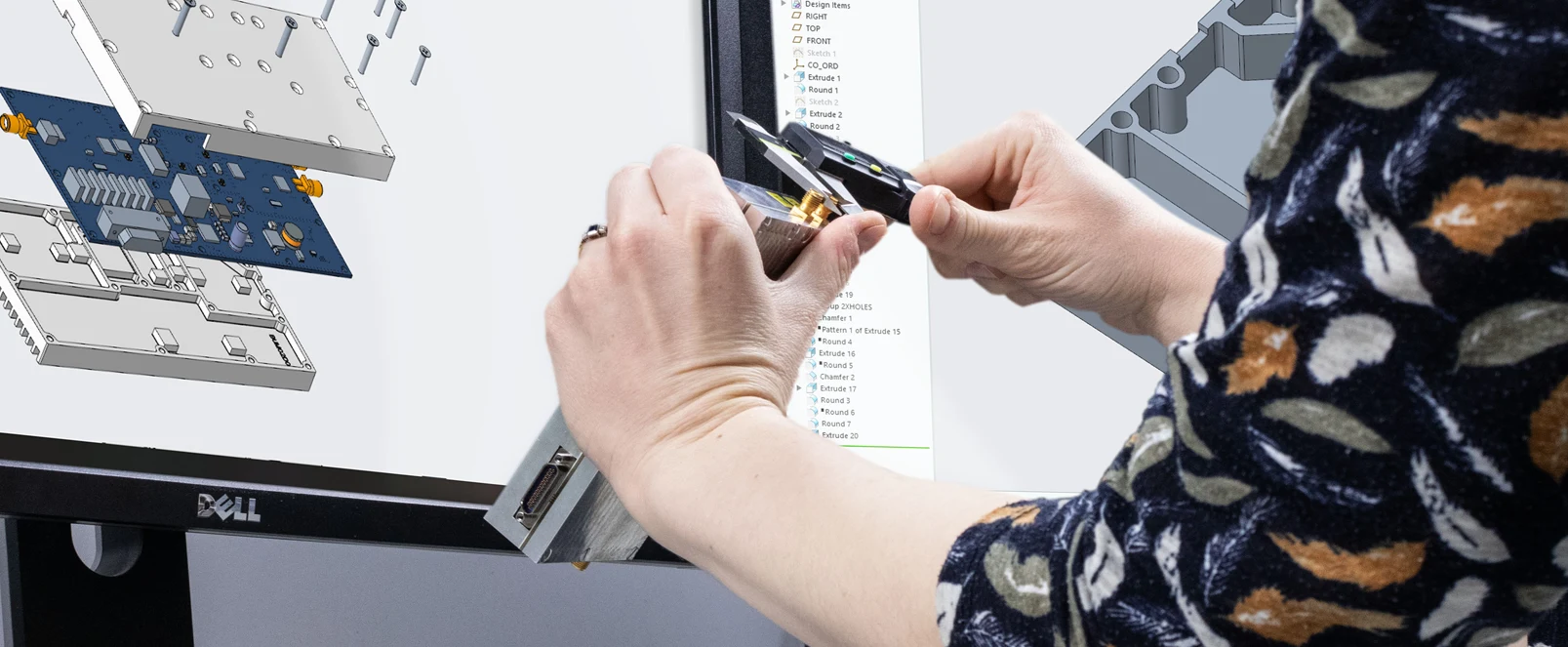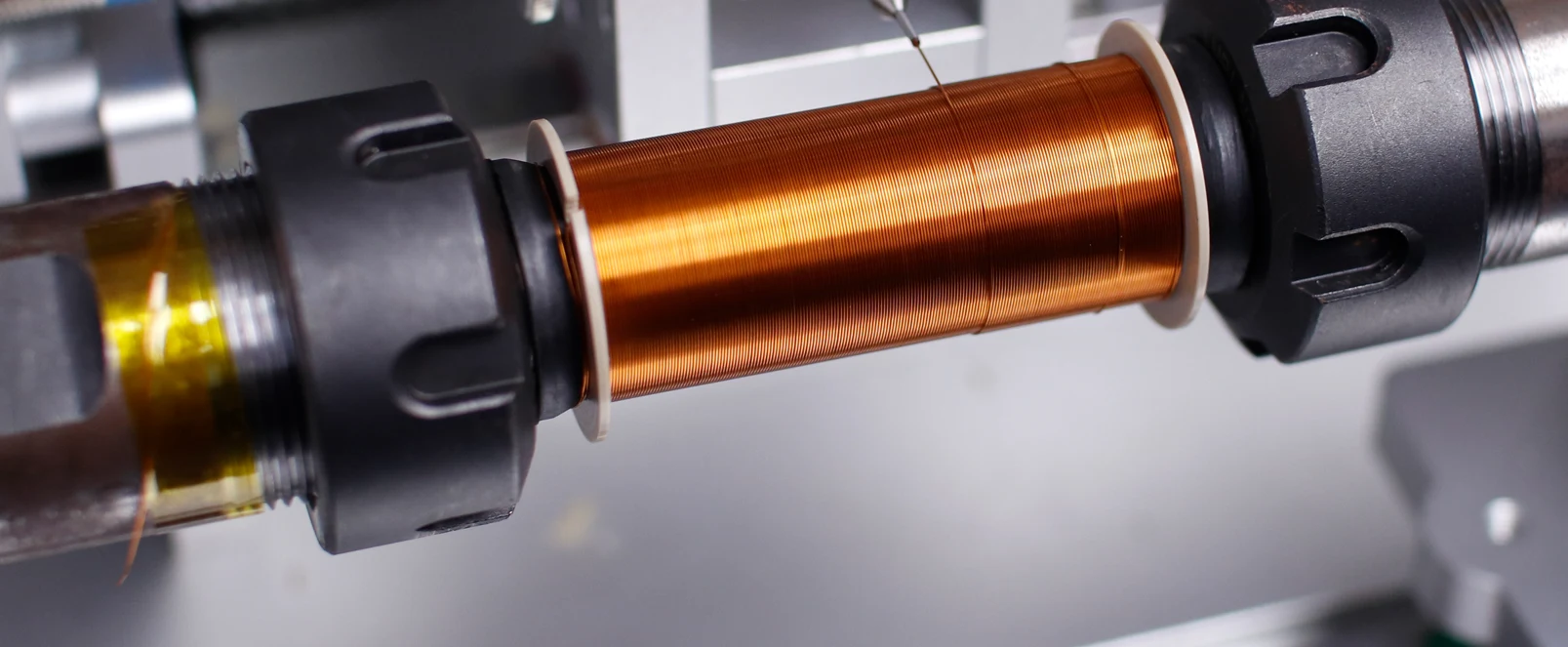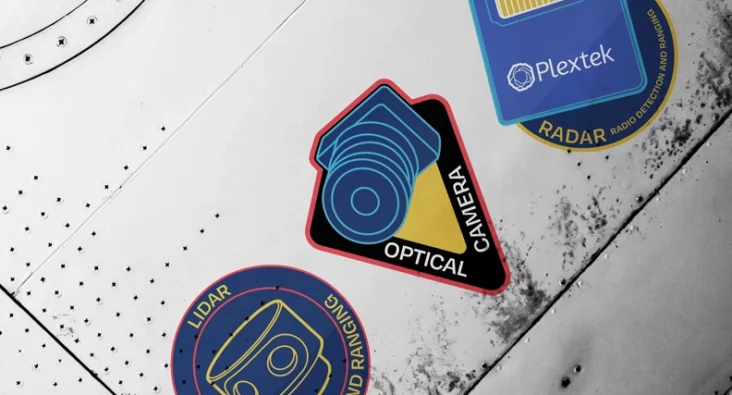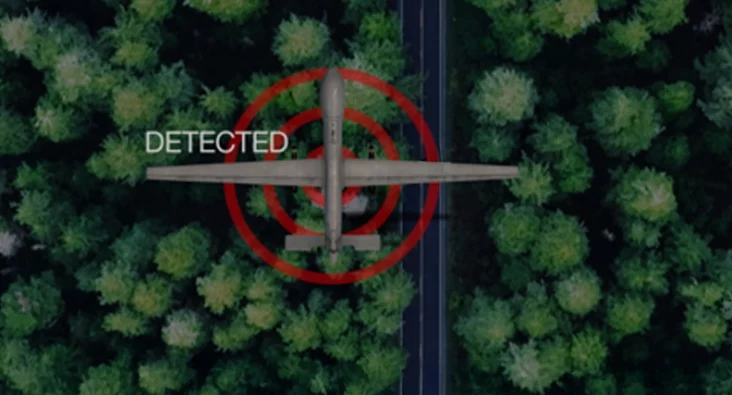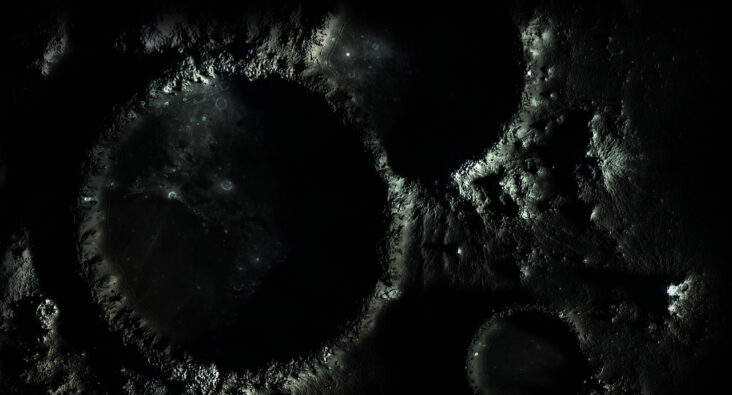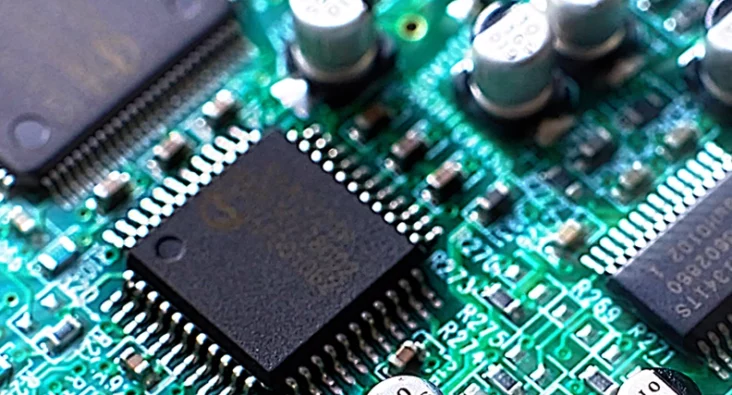Beyond policy: how industry must deliver ESA’s Zero Debris Vision
On the frontline of making orbital sustainability real by 2030
Space needs to be kept clean, and this is becoming increasingly hard as commercial and defence activities ramp up. The European Space Agency’s recently published Zero Debris Technical Booklet, developed through a collaborative community effort bringing together industrial and institutional perspectives, represents a critical step forward in addressing one of the most pressing challenges facing the orbital environment. However, achieving the ambitious targets outlined in the Zero Debris Charter by 2030 will require not just policy frameworks, but innovative technologies, substantial investment, and honest conversations about the gaps that remain.
Plextek and Aphelion Industries are two different companies at the forefront of space sustainability technologies, each offering their perspective on what it will take to realise ESA’s vision, and where the biggest challenges lie ahead.
The scale of the challenge
The numbers are stark. The satellite population is expected to grow from approximately 12,000 active satellites today to over 40,000 by the early 2030s. This dramatic expansion brings with it an equally dramatic increase in collision risk. Space assets already sustain an estimated $100 million USD in damage annually from collisions with non-tracked threats, with 70% of these incidents occurring in the critical 600-900km altitude band. By 2030, this could escalate to over a billion dollars in industry risk per year.
The threat isn’t limited to existing debris. Even if all future launches were cancelled today, space debris would continue to proliferate through weathering and recursive fragmentation processes. Statistical models estimate 140 million space debris fragments between 1 mm and 1 cm in size, with an additional 1.2 million objects from 1 cm to 10 cm. Only objects larger than 10 cm (approximately 54,000 pieces) can be regularly tracked, representing less than 1% of the total debris population.
“The industry in general isn’t doing enough in terms of measuring the untracked millimetre size debris field in Low Earth Orbit whilst in-orbit,” observes Richard Jacklin, Commercial Lead for Space at Plextek. “There’s no long-term measurement of orbital cleanliness. We remain heavily reliant on theoretical models rather than observed measurement data.”
Complementary technologies for zero debris
ESA has outlined six technical priorities that must be met to make its vision a reality. The community-developed Zero Debris Technical Booklet establishes clear targets, but achieving them requires mature, deployable technologies. Two UK-based technology developers, Plextek and Aphelion Industries, are already building the systems that could help close this gap. The Booklet identifies six key technical areas requiring immediate attention:
- Prevent release of debris
- Guarantee timely and successful clearance
- Prevent debris generation through break-ups or collisions
- Improve space traffic surveillance and coordination
- Prevent casualties on ground
- Understand and mitigate adverse consequences of space objects and debris
Delivering on this orbital safety deadline will require significant investment in new capabilities. Plextek and Aphelion Industries have developed complementary technologies that directly address several of these critical areas, demonstrating how industry innovation can support ESA’s ambitious timeline.
Enhanced armour for debris mitigation
Aphelion Industries, a Scottish start-up, has developed TARGE: a spacecraft armour system designed to protect satellites against impacts from lethal non-trackable (LNT) threats including micro-meteors, orbital debris (MMOD), and fragmentation-based anti-satellite weaponry.
The system directly supports ESA’s objectives in two key areas. First, it helps prevent the release of debris by improving asset survivability and reducing fragment and spall (material ejected from the spacecraft surface itself) when collisions do occur. Second, it prevents debris generation through break-ups by making more collisions survivable in the first place.
“The majority of sensors are unable to track these objects, so they cannot be reliably avoided,” explains James Snape, Founder of Aphelion Industries. “Our armour makes survivable collisions produce less secondary debris and ejecta, which is critical as the orbital environment becomes increasingly congested.”
Traditional spacecraft armour systems are bulky and heavy, making them too expensive for most missions. Unprotected satellite structures can be penetrated by impactors as small as 3mm in diameter. Aphelion’s TARGE system is lighter and more compact than traditional armour, which means satellites can now afford the kind of advanced shielding previously only used on crewed space stations.
The company’s work has been recognised through inclusion in the first phase of ESA’s Zero Debris Platform programme, which funds co-development between suppliers and selected prime contractors from 2026-2029. Aphelion has also secured UK Science and Technologies Facilities Council (STFC) funding for ISAM-enabling technologies, recognising the company’s resilience and remediation innovations as critical to the growing In-Space Servicing, Assembly and Manufacturing (ISAM) sector.
Aphelion has commenced physical and environmental testing of the TARGE advanced armour system through their incubation partnership with the Higgs Centre for Innovation at the UK Astronomy Technology Centre in the Royal Observatory of Edinburgh. The team expects Q4 testing to validate the substantial mass and volume reductions over existing MMOD-shielding systems predicted by digital modelling and simulation.
Radar and situational awareness for sustainable orbits
Plextek has developed custom radar and space electronics systems that detect micro debris and provide situational awareness in real-time. Their millimetre-wave radar modules are built to survive the harsh space environment, continuously monitoring the density of debris in low earth orbit, improving the data and knowledge at orbital altitudes.
The technology tackles two of ESA’s Zero Debris objectives head-on. It improves traffic surveillance and coordination by generating actual measurements rather than relying solely on computer models, addressing the data gap Richard Jacklin identified.
“Models alone can’t tell us what’s really happening up there,” says Richard Jacklin. “Our radar gives operators real measurements to verify their models, detect debris that’s too small for ground-based sensors and make better decisions about when and how to manoeuvre.”
The challenge with traditional approaches is that optical catalogues and simulations struggle to capture the full picture, especially for micro-debris and fast-developing collision risks. Plextek’s compact, low-SWaP (low size, weight, and power) radar systems are designed to fit on satellites and servicing platforms without breaking mission budgets. With radar systems already proven in orbit, Plextek’s next step is to build on that heritage, creating the next generation of mmWave radar debris detectors that can be deployed at scale on many satellites in different orbits.
Beyond Earth orbit, Plextek’s radar capabilities extend to rendezvous and proximity operations (RPO), lunar missions, helping landers with altitude measurements during approach, and lunar rovers navigate terrain. Whether in crowded low Earth orbit or on the Moon, the technology provides the reliable awareness that future space operations will depend on.
A systems approach to space safety
The combination of enhanced protection and improved detection represents a comprehensive approach to space sustainability. Whilst armour systems enable satellites to survive impacts from threats that cannot be tracked, advanced radar and monitoring capabilities work to reduce the population of non-tracked objects and improve collision avoidance for trackable threats.
This complementary relationship suggests a natural integration point. Satellites operating in high-risk environments, particularly those conducting ISAM operations, or high-value assets in congested orbits, face threats from both trackable and non-trackable debris. A platform combining both capabilities would offer layered resilience: radar to avoid what can be detected, and armour to survive what cannot.
Technical integration and operational benefits
The two technologies work together on the same satellite platform. Plextek’s radar detects debris down to sub-millimetre scale (approximately 0.8mm), providing guidance and information about suitable orbits, whilst Aphelion’s armour protects against impacts from particles across the full size spectrum.
This combination matters most for missions that can’t afford to fail: in-space servicing operations, long-duration platforms, and high-value assets operating in those congested orbits. These satellites need both early warning and last-line defence, but they also need to stay within realistic size and cost budgets. An integrated approach delivers resilience without the traditional penalties, making reliable protection practical for operators who previously couldn’t justify it.
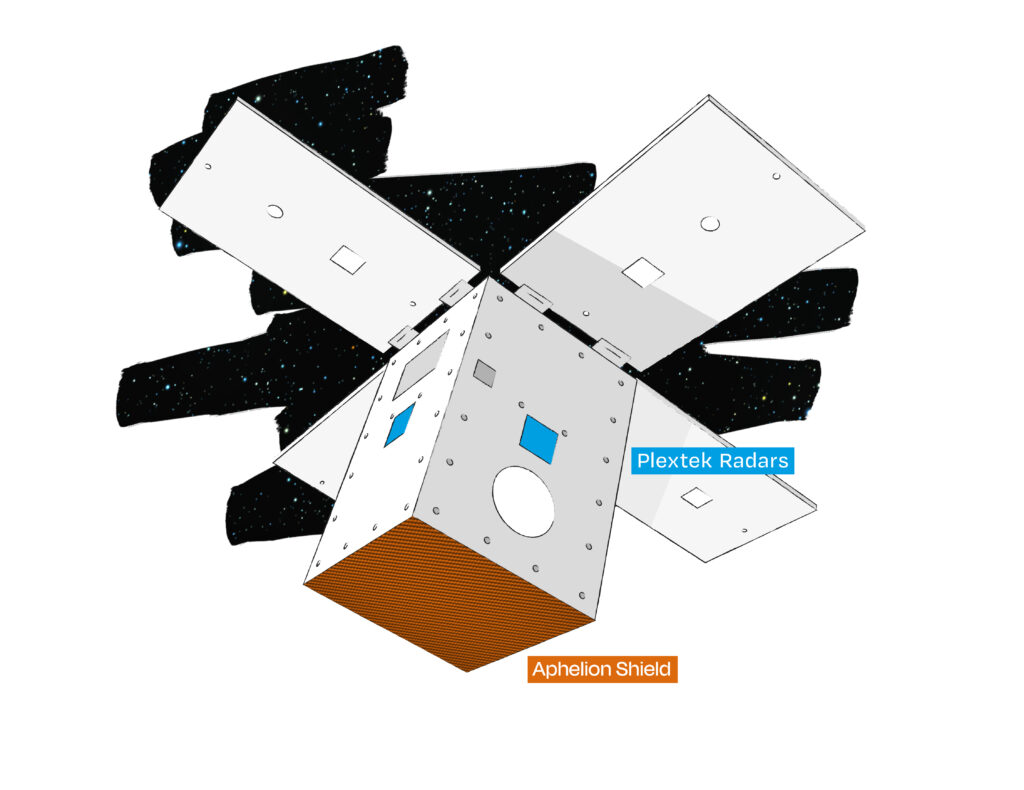
The funding and policy challenge
Reaching a debris-neutral orbital environment by 2030 requires not only technical innovation but also supportive policy frameworks and adequate funding.
“Openness to alternative business models is critical,” says James. “The ecosystem is changing, but people should be less hesitant about acknowledging that some capabilities are inherently dual use. Addressing ‘externalities’ like cleaning up space is more economically viable if development and operation of its enabling technologies are offset in the defence & security markets. This enables cost-effective provision of publicly funded services for the public good, like debris removal.”
Richard agrees: “There’s good overlap in our funding challenges. We’re working with civil space agencies, but commercial funding hasn’t yet materialised at scale. Business models rely on commercial operations starting to invest meaningfully in these technologies, or on defence funding bridging the gap.”
The next three to five years: critical decision point
The window for achieving zero debris by 2030 is rapidly closing. Space infrastructure development carries substantial costs. Amazon’s Project Kuiper megaconstellation may require around $20 billion, whilst major launch systems like SpaceX’s Starship R&D costs could total up to $10 billion. Yet these figures pale in comparison to the potential economic damage of inaction: if debris generation spirals out of control, some orbits could become unusable, with long-term negative economic impact estimated at approximately 1.95% of global GDP.
The economic case for integrated monitoring and protection
The space insurance market reveals why this combined approach matters beyond just mission success. Satellite insurance typically requires premiums of 5-20% of total mission value. However, only a small fraction of the approximately 12,000 active satellites carry operational insurance (roughly 500 in total), and collision coverage is often specifically excluded.
The 2018-2019 period proved particularly instructive. Losses in the space sector exceeded gross premiums, triggering a two-to-three-fold spike in premium prices. Major insurers, including Assure Space, ceased offering policies for Low Earth Orbit assets (which represent approximately 80% of all satellites) except in rare cases, and specifically excluded collision coverage even then. Whilst pricing has since stabilised back to the 5-20% range, the message to industry innovators, investors, and governments was clear: unquantified risk undermines confidence in future missions.
This is where technologies like those developed by Aphelion and Plextek become economically critical, whether deployed independently or as integrated systems. The generation of vital data on previously untracked debris populations, combined with the physical robustness satellites require to operate in high-threat environments and obtain sample data, allows insurers to better quantify the orbital environment. Improved risk assessment translates directly into more favourable coverage terms and competitive premiums, kickstarting coverage for the next generation of in-space operations and making ambitious missions economically viable.
The decision point
The decisions made in the next 12-24 months will determine the orbital environment of 2030. Without immediate investment in both monitoring and protection technologies, the insurance crisis of 2018-2019 will seem mild compared to what could follow. The technical solutions exist; what’s needed now is the commercial and policy commitment to deploy them at scale.
What’s missing: the industry perspective
Whilst ESA’s Zero Debris Technical Booklet provides comprehensive guidance across six key areas, both companies identify significant gaps in current approaches.
ESA is investing but it’s not a blank cheque, and there are competing priorities in any space agency. Research published in 2023 estimated annual losses from debris collisions at $86-103 million in 2020, whilst the OECD (Organisation for Economic Co-operation and Development) reports that debris protection and mitigation measures already cost satellite operators between 5-10% of total mission costs, potentially hundreds of millions of dollars for geostationary satellites. However, the cost of inaction would be far greater: if debris generation spins out of control, some orbits could become unusable, with one study estimating long-term negative economic damage of approximately 1.95% of global GDP.
The recently published UKSA Corporate Plan 2025-26 allocates approximately £4 million to In-Orbit Servicing, Assembly and Manufacturing activities, less than 1% of the Agency’s total £681.3 million budget for the year. This comes despite identifying ISAM as a sector where “the UK can excel” and acknowledging it “supports global efforts to secure a more sustainable space environment” with “potential to extend the life of spacecraft, lower mission costs and reduce the need for frequent launches”. For companies like Aphelion developing debris mitigation technologies that directly support ISAM’s foundational requirements, this funding landscape presents both challenges and opportunities as the sector works to translate long-term government priorities into immediate commercial viability.
The most critical gap, according to Plextek, is the lack of sustained, in-orbit measurement capabilities. Theoretical models, whilst valuable, cannot fully capture the complexity and evolution of the debris environment. Long-term monitoring infrastructure is needed to validate models, track trends, and provide the empirical data necessary for evidence-based policy and technology development.
From Aphelion’s perspective, the challenge lies in creating viable commercial pathways for debris mitigation and remediation technologies. The question remains: which revenue streams will drive adoption – defence contracts, space agency procurement, or private commercial operations?
“Each funding stream needs to recognise and accept dual-use technologies for these capabilities to come online at scale,” notes James. “Some activities may need to be absorbed into defence contracts and run at cost for the public good. These conversations need to happen at the policy level, and we’re keen to support them.”
A call for coordinated action
Achieving zero debris by 2030 is ambitious, perhaps unrealistically so without immediate, coordinated action. Technical solutions are emerging, with companies like Plextek and Aphelion Industries developing the monitoring, protection, and capabilities needed. However, technology alone isn’t enough.
ESA is leading the way, but meaningful progress requires sustained commitment from agencies worldwide and recognition that UK-developed technologies must find pathways into international programmes, commercial constellations, and allied defence procurement if they’re to achieve the global deployment scale the problem demands.
Success requires:
- Sustained multi-agency investment from agencies worldwide
- Continued funding for both space-based monitoring and protective technologies
- Policy frameworks that recognise and accommodate dual-use technologies
- International coordination on debris mitigation standards
- Commercial funding models that make debris management economically viable
- Honest assessment of gaps in current approaches and willingness to address them
The ESA Zero Debris Technical Booklet provides an excellent roadmap. However, turning it into real-world orbital sustainability will require political resolve, committed funding, and rapid deployment of the right technologies.
The orbital environment we have in 2030 will be determined by the decisions made in the next 12-24 months. Both companies are committed to being part of the solution, but success will require the entire space sector – agencies, commercial operators, and governments – to act with urgency and coordination.
The time to act is now
The path to orbital sustainability by 2030 is clear, but the window for action is closing fast. ESA’s Zero Debris Charter provides the roadmap. What’s needed now is coordinated commitment from policymakers, space agencies, and commercial operators to fund, deploy, and scale the technologies that can make it real.
This requires sustained investment in monitoring and protection capabilities, policy frameworks that accommodate dual-use technologies, and honest conversations about which funding models will drive adoption at the pace and scale required. Not all the answers are clear yet, but waiting for perfect clarity means missing the deadline entirely.
Plextek and Aphelion Industries are working independently and collaboratively with civil and defence partners to deploy these capabilities and are keen to engage with agencies, operators, and policymakers on how monitoring and protection technologies can support upcoming missions and procurement strategies.
The decisions made in the next 12 to 24 months will determine what orbits look like in 2030. The technical solutions exist. The question is whether the sector can move fast enough to deploy them.






